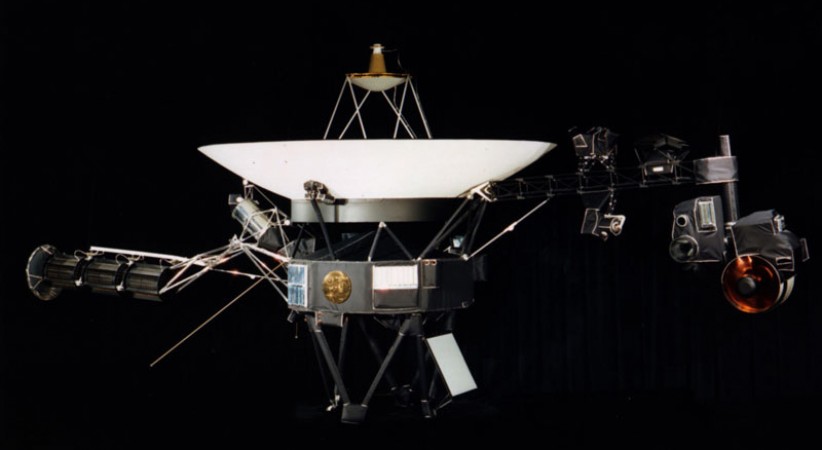
New Delhi:- NASA's Voyager spacecraft zoomed in on the planets of our solar system decades ago and is now traveling through interstellar space, the final destination unknown. However, the final drives of the two distant spacecraft are getting closer and closer. Voyage 1 and Voyage 2, both launched in 1977, are built to last for 5 years. They've now been transmitting space information for more than 46 years, a feat made possible thanks to a rugged spacecraft and a team of smart NASA engineers.
However, the Voyager's nuclear power supply (Plutonium-238) is running out. To save fuel, NASA turned off the probe's cameras and half of their science instruments. Now 15 and 12 billion miles away, Voyager 1 and 2 are still transmitting unprecedented information about their distant surroundings, where no human spacecraft has ventured before. They send back data on radiation in interstellar space and how far the sun's protective energy bubble and particles extend into space.
"The scientific data astronauts send back becomes even more valuable the farther they are from the Sun, so we're certainly interested in keeping as many instruments as possible," said project scientist Linda Spilker. the longer the science works, the better.”
Also Read:- NASA Enhances Public Engagement with New Website, Streaming Service, and App Update
Unsurprisingly for aging spacecraft at such long distances – it takes about two days to send and receive a message – Astronauts have experienced glitches and, more recently, radio maneuvers. thought caused Travel's communications to be disrupted. 2. (In early August 2023, NASA attempted to "restore all communications with Voyager 2" after manipulating the probe's antenna slightly away from Earth.)
So as we approach a half-century of Astronaut activity, you might wonder, like many in the space community, how much longer will the legendary mission last?
This simple question has several answers. There is limited energy left to collect scientific data from spacecraft, such as the cosmic ray subsystem, which measures particles (emitted by objects such as stars) passing through the instrument. To keep the five devices running, engineers turned off radiators and other items. In 2022, NASA hopes that such energy conservation could "keep both spacecraft running and make science unique beyond 2025". Starting in 2023, the space agency announced more energy-saving efforts.
Also Read:- NASA to lose proximity with its Voyager 2 and hoping soon to reunify
"This decision will allow the mission to postpone the decommissioning of a scientific instrument until 2026, instead of this year."
NASA is squeezing all it can out, but it's reasonable to expect more science instruments to begin decommissioning by 2025 or 2026 - although some may last until the end of the decade. In the mid-2030s, we'll probably get our last Travel message. Transmission from Voyager was selected by the Deep Space Network, consisting of a 230-foot wide radio antenna located in Canberra, Australia. But even these great dishes have their limits. The two Astronaut spacecraft could remain within range of the Deep Space Network until around 2036, NASA explains, “depending on how much power the spacecraft still has to transmit signals back to Earth.
The Voyager Mission begins to explore the outer planets (such as Jupiter and Neptune) and some of the innermost realms of the solar system. Now in interstellar space, scientific data is regularly sent home. (Both Voyager spacecraft passed through the "heliosphere," the region of space around the sun where interstellar space began, NASA said).
Also Read:- NASA to secure Connection with its Voyager 2 after false lead hiked up
Both Voyager 1 and 2 are nearing the end of their life now, as NASA has begun shutting down some devices to save energy and keep them running at full capacity, as well as providing more and more space information.